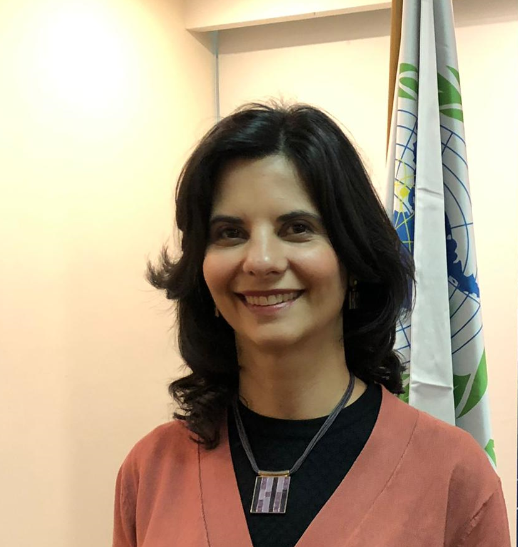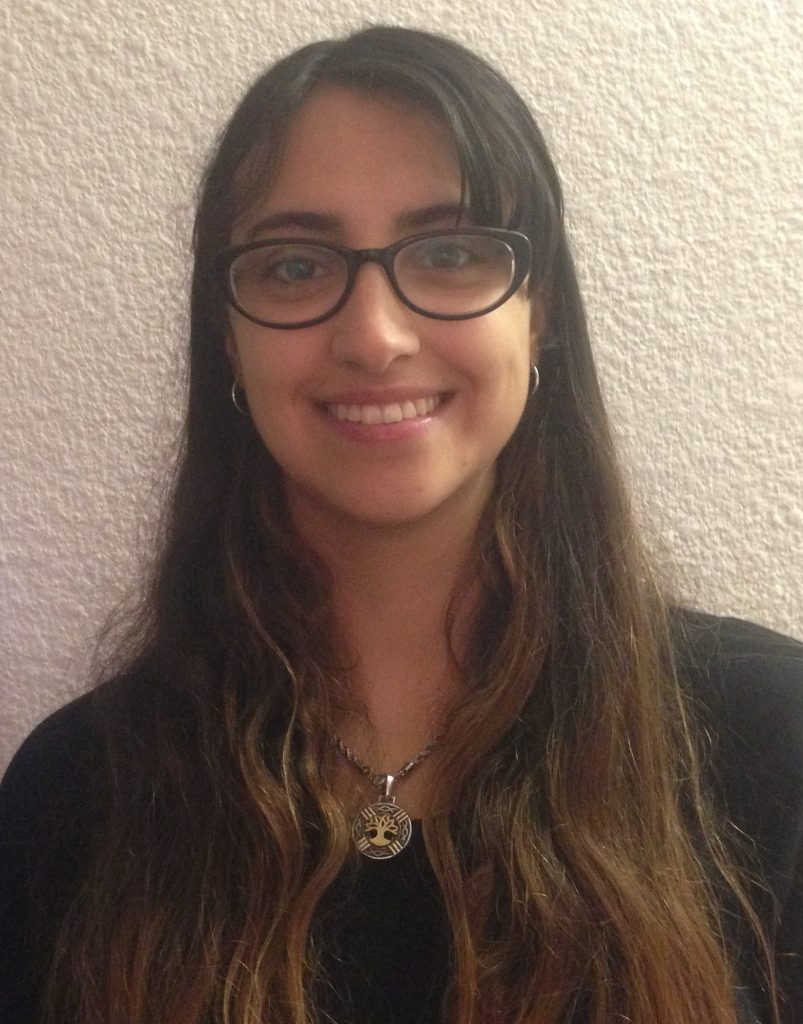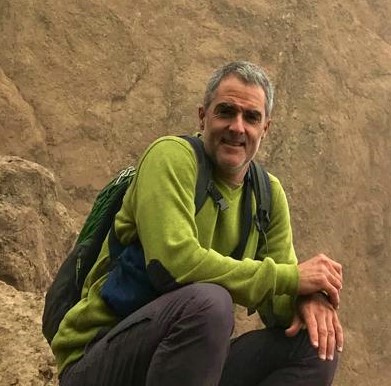Current Project: 2024 - 2027
RLA 7/028 – Strengthening Regional Capabilities on the Application of Nuclear and Isotopic Techniques to Increase Knowledge about Stressors that Affect Marine and Coastal Sustainable Management (ARCAL CLXXXIX)
Previous Projects:
RLA 7/025 – Strengthening Capacities in Marine and Coastal Environments Using Nuclear and Isotopic Techniques (2020-2023).
RLA 7/022 – Strengthening Regional Monitoring and Response for Sustainable Marine and Coastal Environments (ARCAL CXLV) (2018-2019).
RLA 7/014 – Designing and Implementing Systems for Early Warning and Evaluation of the Toxicity of Harmful Algal Blooms in the Caribbean Region, Applying Advanced Nuclear Techniques, Radioecotoxicological Evaluations and Bioassays (2009-2012).
Participating Institutions:
Dirección Nacional de Recursos Acuáticos (DINARA). Ministerio de Ganadería, Agricultura y Pesca (MGAP).

Research Areas::
- Harmful Algal Blooms (HABs) and Marine Biotoxins.
Centro Universitario Regional del Este (CURE). Universidad de la República.


Research Areas::
- Ocean Acidification.
- Microplastic contamination.
Servicio de Oceanografía, Hidrografía y Meteorología de la Armada (SOHMA).

Research Areas::
- Ocean Acidification.
- Eutrophication.
THE PROBLEM
Harmful algal blooms or HABs occur when microalgae (microscopic algae that live suspended in all bodies of water) grow uncontrollably and produce toxic or harmful effects on people, or the ecosystem in general (fish, shellfish, mammals and birds). Effects on humans caused by HABs can be mild, but in some cases fatal. Likewise, these blooms can cause significant economic losses as a result of the closure of bivalve mollusc fisheries. Today it is a global problem. The frequency of these events has intensified due to the effects of climate change and eutrophication of coastal areas.
A lo largo de los 41 años de monitoreo, se han registrado varias especies tóxicas. Algunas ya fueron analizadas desde el punto de vista molecular para su correcta identificación. Varias de ellas se cultivaron en condiciones controladas de laboratorio para conocer las toxinas que producen. Además, se estudiaron las condiciones ambientales en las que crecen masivamente.
Currently, models are made to predict the moments of greatest risk of human poisoning. The registered toxins are the paralyzing poison of molluscs, the diarrheal poison of molluscs and the amnesic poison of molluscs (the latter, in concentrations lower than those admitted, for which reason a ban has never been established for it).
In the first decades of monitoring, the most frequent toxin was the paralytic, with the longest duration of the closures at the beginning of the period. In recent decades, the most recurrent has been the diarrheic one and the duration of its closures has been increasing.
PLASTICS AND MICROPLASTIC
Plastic is a cheap, durable and highly versatile material, which is why it has become an essential component of our modern lives. However, poor management combined with the 'usual and irresponsible' behaviors (individual and collective) towards waste, have caused plastic waste to be found today in all environments on the planet, and especially in seas and coastal areas, which they have become sinkholes with the consequent negative impacts on wildlife. Although the consequences of larger debris are now more evident (due to entanglement, ingestion or modification of the distribution of species), much less is known about the impacts of microplastics (<5mm) and their effects on food webs. In addition to the 'direct' consequences of a possible ingestion (that is, a feeling of satiety and starvation, obstructions), these microplastics can behave as vectors of dangerous pollutants (POPs) with the capacity for endocrine disruption in food webs, through processes of bio-accumulation. Thus, microplastic pollution has been identified as a serious global environmental threat.
ACIDIFICATION
Ocean acidification is a problem that is being exacerbated over time as a result of the indiscriminate use of fossil fuels, mainly. The increase in atmospheric CO2 modifies the carbonate system in water, inducing an imbalance that tends to decrease the pH of the oceans. This drop in pH has significant ecosystem consequences, initially in organisms with calcareous structures and consequently the entire food chain that depends on these organisms. In turn, the deterioration of ecosystems reduces food availability (artisanal or industrial fishing exploitation) and the quality of the environment for recreational purposes (tourism), economically harming the country.
INFORMATION FOR ACTION
Uruguay's participation in the REMARCO network gives us the opportunity to strengthen national capacities in sample analysis and standardization of analytical procedures.
The cooperation and exchange of experiences with other countries in the region enriches our work and that of the other members of the Network.
In relation to the stressor (HAB), there is a national institutional instance in DINARA, for control, monitoring and communication to the population.
The temporal and spatial continuity of monitoring is relevant, complying with analytical standards.
Country Members:
Leonardo Ortega. Doctor of Biology.

Dirección Nacional de Recursos Acuáticos (DINARA), Ministerio de Ganadería, Agricultura y Pesca (MGAP).
Role in the Project: National Counterpart of the RLA 7/025 Project.
Contact info: lortega@mgap.gub.uy
Performance area::
It consists of characterizing the different marine and estuarine environments of the Uruguayan continental shelf, as well as relating the space-time variations in abundance of fishery resources and other relevant organisms from the sanitary point of view based on environmental variables. This involves the design and coordination of oceanographic campaigns and the analysis and processing of information collected.
He is currently head of the Oceanography Laboratory of DINARA, MGAP and coordinates the monitoring of toxic phytoplankton. A relevant aspect of his research consists of determining the effect of climate variability and change on fishery resources.
These effects have shown changes in distribution, abundance and even mass mortality in some cases. Likewise, the climate operates as a physical forcing that modulates oceanographic conditions, which are a determining factor in algal blooms with the potential to produce toxins.
Valentina Amaral Acosta. Ph.D. in Marine Sciences and Technologies

Centro Universitario Regional del Este (CURE), Universidad de la República , Uruguay.
Role in the Project: Reference researcher Oceanic Acidification Component.
Contact info: vale8372@gmail.com / vamaral@cure.edu.uy
She is a Ph.D. in Marine Sciences and Technologies (Universidad de Cádiz, Spain), Master's degree in Geosciences (PEDECIBA, Fcien-UdelaR) and degree in Biological Sciences (Universidad de la República, UdelaR, Uruguay). She is an Assistant at the University Center of the Eastern Region of UdelaR, where she is a member of the Functional Ecology of Aquatic Systems University Development Pole.
She is a professor of the Degree in Environmental Management and of the Optional Initial Cycles. She is also a member of the Research Group of the Andalusian Plan for Oceanography and Coastal Pollution, of the Faculty of Marine and Environmental Sciences of the Universidad de Cádiz, Spain.
She works in Marine Biogeochemistry, in particular, she studies the role of dissolved organic matter in the carbon cycle and in the climate, under the scenario of global change. She also studies the distribution and emission of greenhouse gases, carbon dioxide (CO2), methane (CH4) and nitrous oxide (N2O) and more recently began studies on acidification in coastal systems. For the collection, preservation of samples and measurement of the variables of the CO2 system in coastal waters, the REMARCO-AO-P-01-V.01 protocol is used.
Initiation Level Researcher. National System of Researchers (SNI-ANII, Uruguay).
Gr3 Researcher, PEDECIBA Geosciences, Uruguay.
Santiago Caro Ros. Dr. in Veterinary Medicine and Technology..

Dirección Nacional de Recursos Acuáticos (DINARA), Ministerio de Ganadería, Agricultura y Pesca (MGAP).
Role in the Project: Counterpart Communications Advisor.
Contact info: scaro@mgap.gub.uy
He has been a technical advisor to an international organization for 19 years, assuming tasks of promotion, relationship, development and execution of projects, consultancies, dictation of international conferences, writing of technical articles, edition of publications, translation, supervision of personnel and administration.
He is currently in charge of the Communication and Institutional Relations Unit of the National Directorate of Aquatic Resources (DINARA-MGAP) of Uruguay.
Advice to General Management on issues in the area. Production of institutional materials for disclosure and dissemination. Government counterpart in the promotion of fishery and aquaculture products at the international level. Representation of DINARA before the Communication and Dissemination Unit of the Ministry of Livestock, Agriculture and Fisheries. Executive edition and administration of the institutional web portal. Edition of the Informative Bulletin of DINARA. Analysis and preparation of reports on the market for aquatic products. Coordination and organization of institutional events.
María Curiel. Analyst in Corporate Communication and Public Relations.

Ministerio de Industria Energía y Minería (MIEM).
Role in the Project: Communication Focal Point of REMARCO
Contact info: maria.curiel@miem.gub.uy / marcurielr@gmail.com
Communication Focal Point of REMARCO.
She is the link between the RED and the project technicians. Functions: give visibility to the project, disseminate and disseminate news and activities. She participates in the monthly meetings (among other things).
She is a National Liaison Assistant with the IAEA (NLA) since 2008:: She belongs to the Department of Technical Cooperation and International Relations of the Ministry of Industry, Energy and Mining (MIEM). She assists in the management and technical cooperation provided by the IAEA to Uruguay in the areas of energy development, nuclear technology and radiological protection through projects.
She organizes national and regional events (training courses, workshops, seminars, symposiums, conferences and meetings).
Management of social networks – ARCAL Uruguay on Twitter.
Communication focal point for Woman In Nuclear Uruguay (WiN ARCAL Uruguay) – Social media management (Twitter).
She is the National Communication Representative of the Regional Cooperation Agreement for the Promotion of Nuclear Science and Technology in Latin America and the Caribbean (ARCAL): project activities are disseminated at the national level to different public and private institutions and organizations. She works on positioning ARCAL's institutional identity and publicizing the benefits of the projects to foster a positive perception of the Agreement.
Ana Martínez Goicoechea. Biologist, MSc.

Dirección Nacional de Recursos Acuáticos (DINARA), Ministerio de Ganadería, Agricultura y Pesca (MGAP).
Role in the Project: Researcher Uruguayan Component HAB
Contact info: anamartinez@mgap.gub.uy / anamart30@gmail.com
She is the official responsible for the phytoplankton laboratory of the National Directorate of Aquatic Resources, in charge of the red tide monitoring program of the Uruguayan coast.
Gabriela Escobar González. Chemical Technologist.

Dirección Nacional de Recursos Acuáticos (DINARA), Ministerio de Ganadería, Agricultura y Pesca (MGAP).
Role in the Project: United Nations Development Program (UNDP) Project URU/17/001 – Strengthening the Technical Capacities and the Operation of the National Directorate of Aquatic Resources.
Contact info: gescobar@mgap.gub.uy
Since January 2018, she is a technical analyst in the Chemical, Instrumental and Bioassay Area. Analysis of samples belonging to the Bivalve Molluscs Monitoring Program. Tests: Determination of lipophilic toxins in bivalve molluscs, Determination of paralytic shellfish poison in molluscs (PSP) and determination of domoic acid by HPLC.
Juan Pablo Lozoya. Bachelor of Biological Sciences (Ecology), PhD. in Marine Sciences.

Centro Universitario Regional del Este (CURE), Universidad de la República , Uruguay.
Role in the Project: Reference researcher Microplastics Component.
Contact info: jlozoya@cure.edu.uy / jplozoya@gmail.com
He is a Biologist and Doctor in Marine Sciences, and has been a research professor at the Centro Universitario Regional del Este (UDELAR) since 2013, in lines of work associated with Integrated Coastal Management and pollution by plastics and microplastics in marine-coastal systems.
He is currently Coordinator of the Master's Degree in Integrated Coastal Management of the Southern Cone and since 2015 he has developed and participated in national and international projects on plastics and microplastics in various aquatic systems, including beaches, rivers and streams, marine waters, glaciers and Antarctic coastal areas. He is a Level I Researcher of the National System of Researchers (SNI, Uruguay).
Adriana Ivonne Miceli Marciano. Bachelor of Chemistry.

Servicio de Oceanografía, Hidrografía y Meteorología de la Armada (SOHMA), Uruguay.
Role in the Project: Reference researcher Oceanic Acidification and Eutrophication Component.
Contact info: sohma_oce_sec@armada.mil.uy / micelia@adinet.com
Chemical Analyst of the Water Analysis Laboratory and the Lubricants and Fuels Laboratory of the Navy (LLUCA section), of the Department of Oceanography, belonging to the SOHMA (Oceanography, Hydrography and Meteorology Service of the Navy). Her performance in said Department includes: sampling and analysis, in water and in marine sediment; nutrient determination; study of hydrocarbons and pesticides; moisture content determination; determination of Organic Matter; participation in granulometry procedures for sand and fines (silt and clay), carried out on marine sediment, using the Sieving and Pipetting Methods and processing of samples of lubricants and fuels.
She has a Bachelor's degree in Chemistry awarded by the Faculty of Chemistry of the University of the Oriental Republic of Uruguay. She is an advanced student of the Bachelor's Degree in Chemistry, of the Faculty of Chemistry, of the Universidad de la República Oriental del Uruguay.
In addition, she works on the unification / standardization of criteria associated with sampling and the correction of different analytical techniques of the carbonate system.
Lucila Silva Díaz. Pharmaceutical Chemistry.

Dirección Nacional de Recursos Acuáticos (DINARA), Ministerio de Ganadería, Agricultura y Pesca (MGAP).
Role in the Project: Analyst of the Bivalve Molluscs Monitoring Program (PMMB).
Contact info: lusilva@mgap.gub.uy
She works as an analytical chemist and Head of the Fishery Products Analysis Laboratory (LAPP).
The fundamental task of the LAPP is to provide reliable and timely analytical results to the Department of the Fishing Industry of DINARA through the performance of microbiological, physicochemical, instrumental, sensory and bioassays, in products and by-products of fishing and aquaculture.
As a chemical analyst, she performs a variety of analyzes such as inorganic contaminants (mercury, cadmium, lead, among others) and biotoxins (ASP, PSP, lipophilic toxins) in import, export or monitoring samples.
She has experience in quality management, being accredited ISO-17025 for several techniques and has worked as a quality manager in other institutions.
Victoria Eugenia Valiñas Martínez. Chemical Analyst.

Servicio de Oceanografía, Hidrografía y Meteorología de la Armada (SOHMA), Uruguay.
Role in the Project: Reference researcher Oceanic Acidification and Eutrophication Component.
Contact info: lab.oceanografia@gmail.com / sohma_laboratorio@armada.mil.uy
Chemical Analyst of the Water Analysis Laboratory, Analyst of the Chemical Oceanography Division.
Advanced student of the Bachelor’s Degree in Biochemistry and analyst of the Water Analysis Laboratory and the Chemical Oceanography Division of SOHMA.
On behalf of SOHMA, she has participated in water sampling and analysis for the quantification of nutrients, pesticides and hydrocarbons (among other tests) in river and ocean waters.
She works on the unification / standardization of criteria associated with sampling and the correction of different analytical techniques of the carbonate system.
Progress and Challenges
The main challenge is to create statistical models that allow predicting blooms to generate an early warning. Likewise, modernize some analytical procedures in the detection of toxins in molluscs.
In recent years, a line of work focused on contamination by plastics and microplastics in aquatic systems, mainly marine-coastal, began. This line has included works that range from the analysis of its distribution in different environments (beaches, rivers, streams, surface marine waters, sea beds, glaciers) and the main factors that affect it, to works that analyze the interaction with fauna (birds, fish, zooplankton). This has led to significant research activity, dissemination in scientific fields, dissemination, teaching and training of human resources.
In addition, it seeks to strengthen the capacities for the oceanic and coastal study, in order to determine its impact and the effects on the different ecosystem systems. At the national level, the information generated will provide the basis for decision makers to have support when developing sustainable management plans and strategies for the marine and coastal environment.
At the national level, we hope to be able to contribute with: a service that ensures and guarantees the safety of shellfish consumption, maintaining a continuous surveillance network that detects the presence of toxic dinoflagellate blooms.
